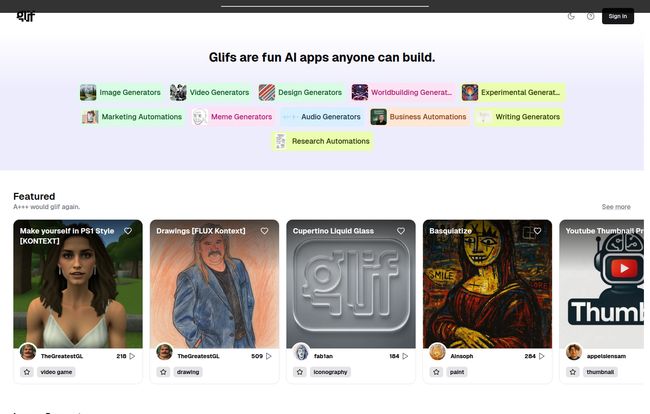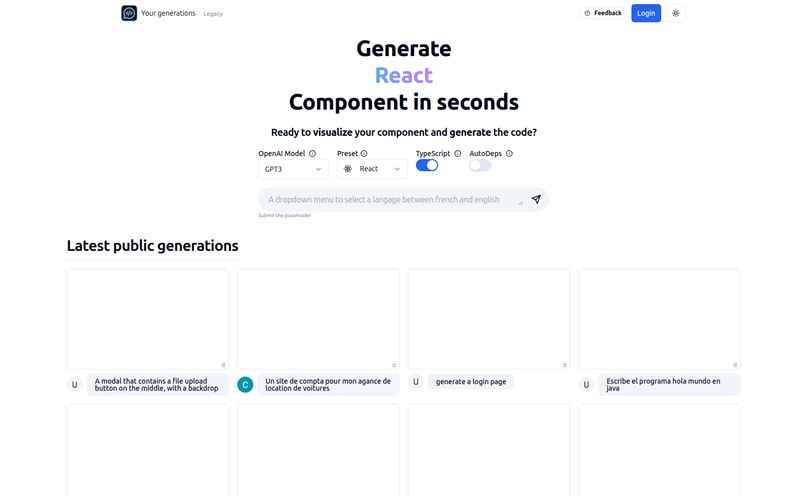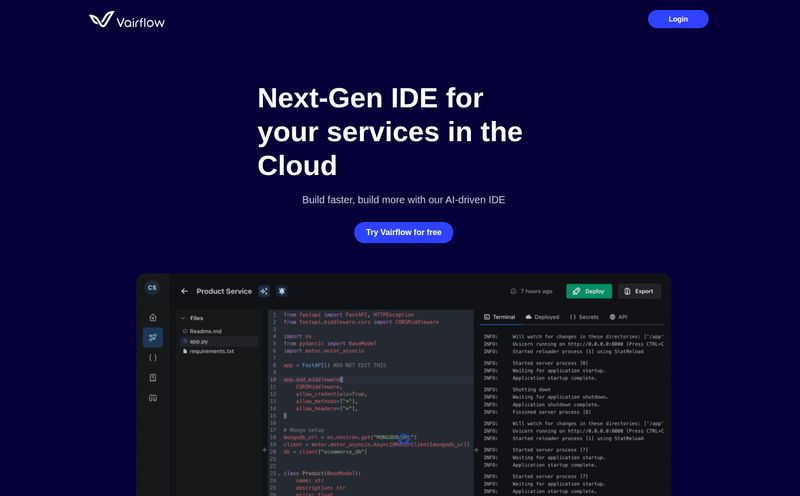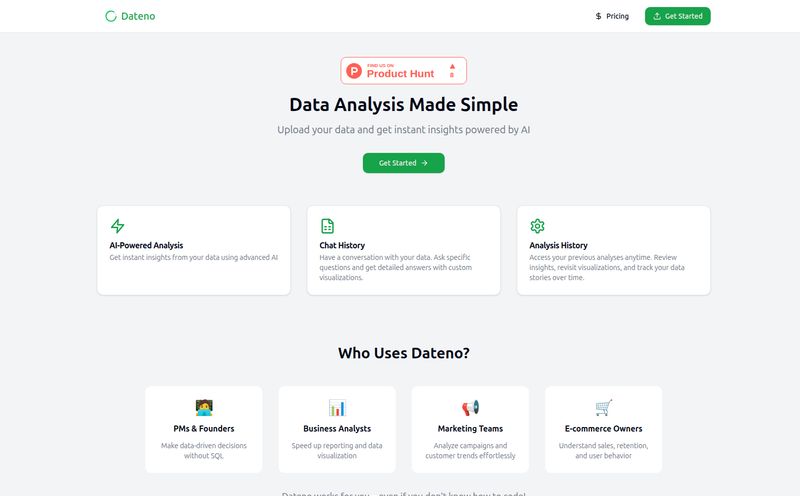The AI space is moving at a breakneck pace. One minute you’ve just figured out the best prompt for DALL-E 3, and the next, there are ten new video models, a dozen new LLMs, and a whole suite of tools that promise to automate your entire life. It’s exciting, sure, but it can also be… a lot. I’ve felt that feeling of being a kid in a candy store with no pockets. So many cool things, but how do you actually combine them?
That’s the exact question I feel like Glif is trying to answer. I’ve been playing around with it for a bit, and I have to say, it’s less like a single, polished tool and more like a massive, glorious box of AI-powered LEGOs. It's a place where you can just... create. And I mean really create, not just type in a prompt.
So, What Exactly is Glif?
At its core, Glif is an AI sandbox environment. That’s a fancy way of saying it’s a platform where you can build your own little AI-powered apps, or “glifs” as they call them. Think of it like this: instead of just using a standalone image generator, you could build a glif that first uses an LLM to brainstorm a creative concept, then feeds that concept into an image generator to create a picture, and then uses another model to write a social media post about it. All in one workflow. It’s a space for mashing up different AI technologies—LLMs, image generators, the powerful ComfyUI node system, and more—to make something new and custom.
More Than Just Another AI Wrapper
I know what you're thinking. Another AI platform? The internet is littered with them. But Glif feels different. There’s a palpable sense of community and experimentation. The homepage isn't a slick corporate landing page; it's a sprawling, chaotic, and beautiful gallery of things people have actually made. It feels more like a creative community like DeviantArt or Behance than a sterile software-as-a-service product.
This isn't just about using AI, it’s about remixing it. You can find a glif someone else made, take a look under the hood to see how it works, and then tweak it to make your own version. This open, collaborative spirit is what I think sets it apart. It’s less about providing a single perfect solution and more about giving you the pieces to build your own.
The Sheer Variety is Kinda Wild
And the pieces they give you... wow. Just scrolling through the featured glifs gives you a sense of the possibilities. I'm talking about stuff I never would have even thought to ask for.
You have your Image Generators, but they're not generic. There are glifs for creating 'Vintage Postcards', 'Bug Golems' (yes, really), and 'Retro Game Painting'. Then there are Business Automations like a 'Branding document generator' or a tool that helps you figure out 'YouTube Channel Logic'. There are even whole categories for Worldbuilding, Meme Generators, and weirdly specific Marketing Automations like a 'Sublimotion Tik Tok Maker'. It's a rabbit hole of creativity. Someone even made a glif called 'Fridge No ID Recipe' which, I assume, tells you what to cook based on what's in your fridge. Genius.

Visit Glif
Who Is This For, Really?
I think Glif hits a sweet spot for a few different kinds of people. It's obviously for the hardcore AI Tinkerers and Mad Scientists among us who love connecting nodes and seeing what happens. The ComfyUI integration alone is a huge draw for that crowd. But I also see huge potential for:
- Marketers: Need to generate 50 different ad concepts and accompanying images? You could build a glif for that.
- Writers & Creators: Stuck on a script? There are glifs for writing comedy cold opens or generating story ideas.
- Designers: Need to rapidly ideate a bunch of different logo styles or poster designs? Yep, there’s a glif for that too.
You don't necessarily have to be a developer with a deep understanding of APIs to get value here, but a little bit of technical curiosity definitely helps.
The Pricing Model: How Much for the Playground?
This is always the big question, isn't it? I was pleasantly surprised here. Glif runs on a credit-based system, which I'm a big fan of because you only pay for what you actually use. First off, they give you 10 free credits every single day. They don’t roll over, so it’s a “use ‘em or lose ‘em” deal, but it’s more than enough to play around, test things out, and run a few simple glifs without ever opening your wallet. That's a great way to lower the barrier to entry.
When you're ready to do some more heavy lifting, you can buy credit bundles. The pricing seems pretty reasonable, especially for the power you're getting. Here’s a quick breakdown:
| Tier | Credits | Price | Best For |
|---|---|---|---|
| Tinkerer | 200 | $1.99 | Dipping your toes in. |
| Creator | 1,000 | $9.99 | Regular hobbyist use. |
| Builder | 10,500 | $100 | Serious projects & small biz. |
| Studio | 110,000 | $1,000 | Heavy-duty power users. |
What I really appreciate is the context they provide. They say that 1,000 credits can get you roughly 255 memes or over 3,800 fast images with their Flux Schnell model. That makes the abstract idea of a 'credit' much more concrete. And crucially, buying credits unlocks full commercial rights to whatever you create, which is a must for any serious work.
My Honest Take: The Good and The Could-Be-Better
No tool is perfect, right? After my time with Glif, here's where I land. The biggest advantage is its sheer scope. It's a genuine AI sandbox that encourages rapid development and out-of-the-box thinking. Having access to so many different models (LLMs, SDXL, Audio generators, etc.) all in one place, especially with the ability to chain them together, is incredibly powerful.
On the flip side, this isn't exactly a tool for your grandma (unless your grandma is a secret AI genius). The very flexibility that makes Glif so powerful can also introduce a bit of a learning curve. To build something truly complex, you'll need to get your hands a little dirty and understand how the different pieces fit together. It's not a 'push button, get bacon' machine for every single task. You'll hit the limitations of the underlying models, and sometimes a workflow just... won't work. But for me, that's part of the fun. It's about the experimentation.
Frequently Asked Questions about Glif
What is a "glif" anyway?
Think of a "glif" as a mini-app or a specific workflow that you or someone else built on the platform. It could be a simple image generator with a specific style, or a complex chain that involves multiple AI models to perform a task like writing and illustrating a short story.
Is Glif actually free to use?
Yes, to an extent. You get 10 free credits every day, which is enough to try out many of the features and run simpler glifs. For more extensive use or to access premium features like full commercial rights, you'll need to purchase credit bundles.
Can I use what I create on Glif for my business?
Yes! Once you purchase a credit bundle (even the smallest $1.99 one), you unlock full commercial rights for the content you generate with those credits. This is a huge plus for professionals.
Do I need to be a coder to use Glif?
Not at all. You can use thousands of glifs created by the community without writing a single line of code. However, if you want to build your own complex workflows from scratch, having a logical, problem-solving mindset helps. It's more like visual programming than traditional coding.
What are some of the key AI models I can access?
Glif integrates a whole bunch of them. For language, you have dozens of LLMs including their own Flux series. For images, you have Stable Diffusion 1.5, SDXL, and others through the incredibly deep ComfyUI integration. There are also audio models like ElevenLabs and Kokoro.
What happens to my free credits if I don't use them?
Your 10 free daily credits reset every 24 hours. They do not accumulate, so you have to use them on the day you get them. This encourages regular engagement with the platform.
Final Thoughts: Go Get Your Hands Dirty
So, is Glif worth your time? If you're even a little bit curious about the creative potential of AI beyond simple chatbots and image prompts, then my answer is a resounding yes. It’s a platform that rewards curiosity and playfulness. It might not be the most polished, single-purpose tool on the market, but that's not what it's trying to be. It’s a workshop, a laboratory, and a gallery all rolled into one.
Go sign up, use your 10 free daily credits, and just... break something. Try to make a meme generator that only uses philosophical quotes. Build a tool that designs terrible logos. You might just stumble upon something brilliant. I think I'm going to go see if I can make a glif that writes SEO blog posts for me... just kidding. Mostly.
Reference and Sources
- Glif Homepage: glif.app
- Glif Pricing Information: glif.app/pricing
- ComfyUI Project Page: https://github.com/comfyanonymous/ComfyUI



